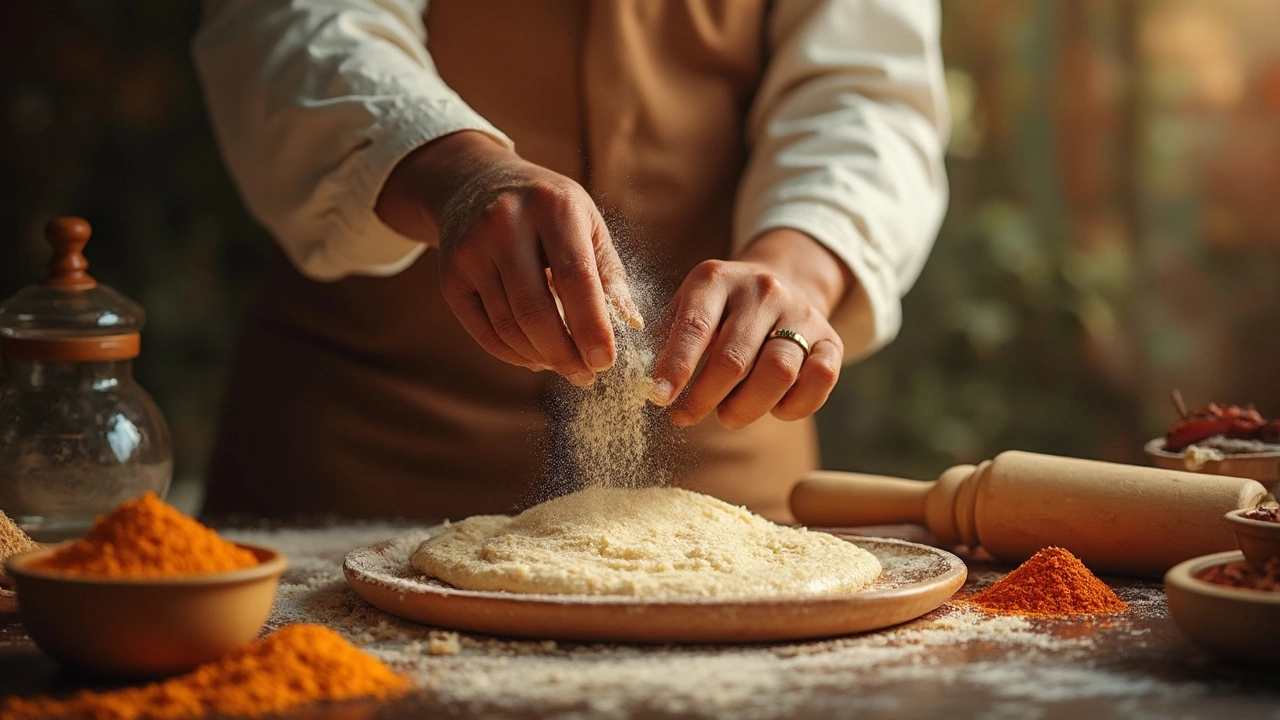Baking Soda in Indian Cooking
When working with baking soda, a white alkaline powder that reacts with acids to release carbon dioxide gas. Also known as sodium bicarbonate, it is a key leavening agent in many home kitchens. In Indian cuisine it often shows up in roti, a thin, whole‑wheat flatbread rolled out and cooked on a hot tawa. Adding a pinch of soda to the dough can make the roti puff up, become softer, and develop a subtle, pleasant crumb. The chemistry is simple: the soda neutralizes the natural acidity of the flour and any yogurt or buttermilk you might mix in, creating bubbles that lift the dough during cooking. This trick is especially handy when you’re short on time or want a faster rise without a long fermentation period.
How Baking Soda Differs from Baking Powder and Other Leaveners
Most cooks confuse baking powder, a blend of baking soda, an acid, and a drying agent with pure baking soda. The key difference is that baking powder already contains the acid needed for the reaction, so it works on its own in recipes that lack natural acidity. When a recipe calls for yogurt, lemon juice, or tamarind, you can rely on baking soda alone; otherwise, baking powder is the safer bet. Other leavening agents you might hear about—like yeast, whipped egg whites, or even fermented batters—serve similar purposes but behave differently. Yeast needs time to feed on sugars, while egg whites trap air when beaten. Baking soda, by contrast, reacts instantly, which is why it’s favored for quick breads, biscuits, and those occasional “soft roti” hacks.
Understanding when to use each agent lets you control texture across a range of Indian staples. For fluffy naan, a small amount of baking soda paired with yogurt gives that signature puff. For crisp papad or crunchy pakoras, you’ll skip the soda entirely and rely on hot oil to create crunch. The same principle applies to sweets: adding a pinch of soda to besan laddoo dough makes the final bite lighter. Throughout these dishes, the common thread is the balance of acid and base—too much soda can leave a bitter aftertaste, while too little won’t give the desired rise. By tasting and adjusting, you’ll develop an intuition for the perfect amount.
Below you’ll find a curated set of articles that dive deeper into each of these ideas. Whether you’re looking to master soft roti, compare baking soda with baking powder, or explore the science behind leavening in Indian recipes, the posts provide step‑by‑step guidance, troubleshooting tips, and real‑world examples. Keep reading to turn the science into tasty results in your own kitchen.

Perfect Dosage: How Much Baking Soda To Use in Dosa Batter for Fluffy Results
Find the right amount of baking soda to add to dosa batter for fluffy dosas. Practical tips, mistakes to avoid, and science behind the results.

Does Baking Soda Make Roti Soft?
Making the perfect soft roti is an art, and many wonder if baking soda can be the secret ingredient to achieve that fluffy texture. This article explores the effects of baking soda on dough and shares practical tips on achieving soft, pliable rotis. We delve into experimenting with various dough ingredients while understanding baking soda's role in the process. Additionally, we discuss alternative methods and common pitfalls in roti-making. Get ready to mix, knead, and flip your way to softer rotis!